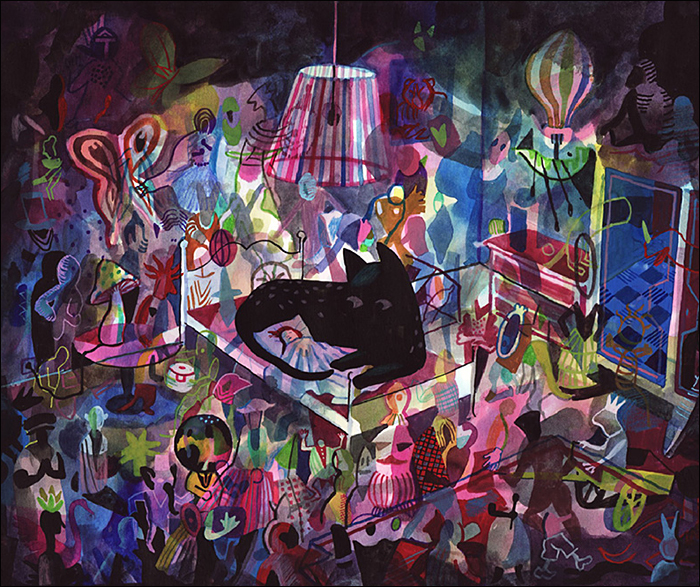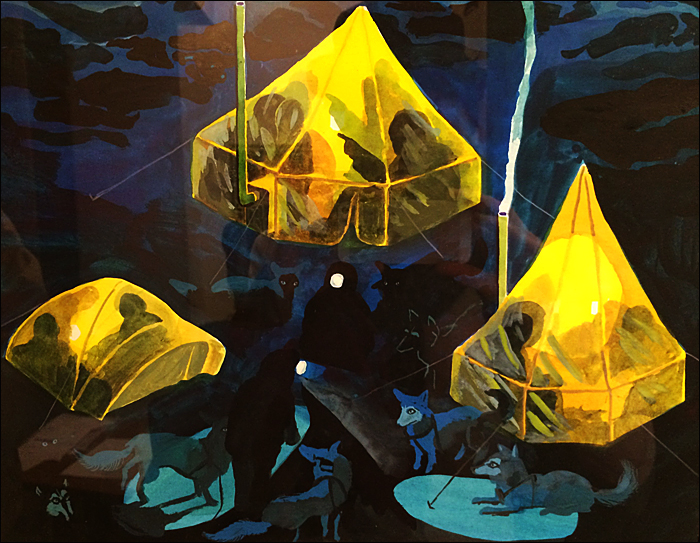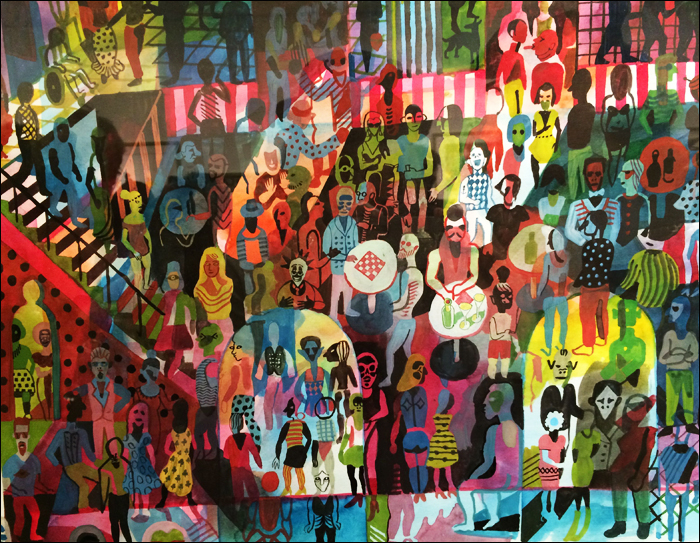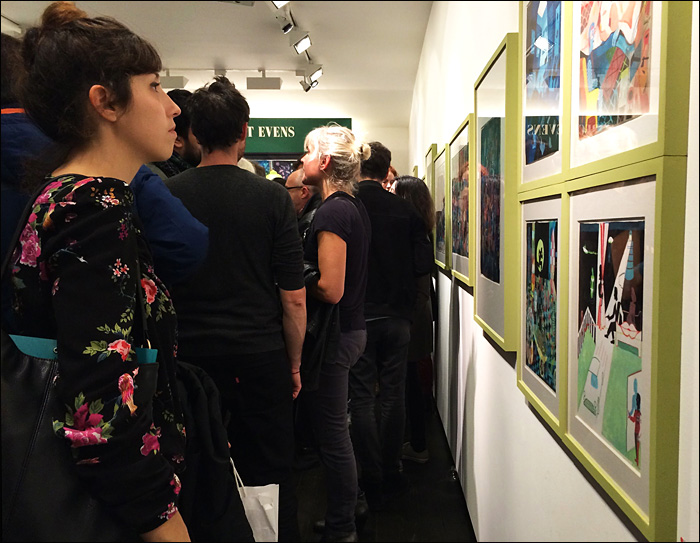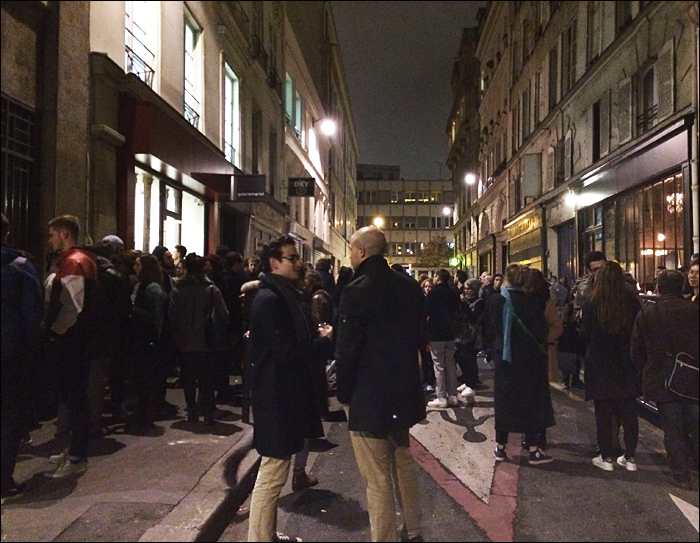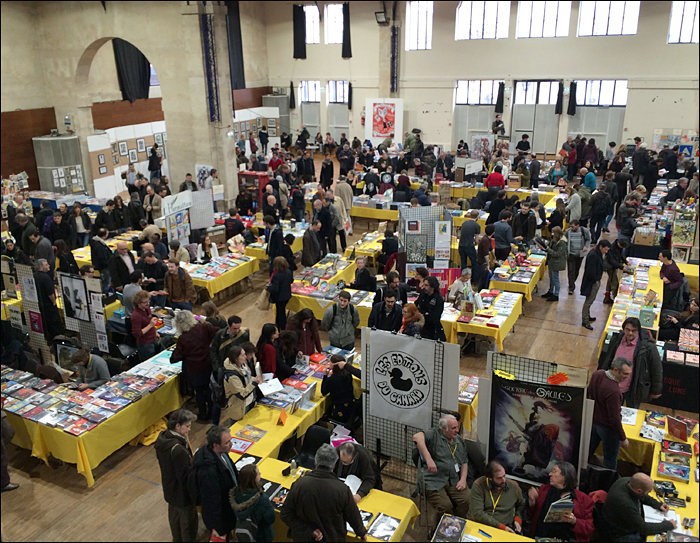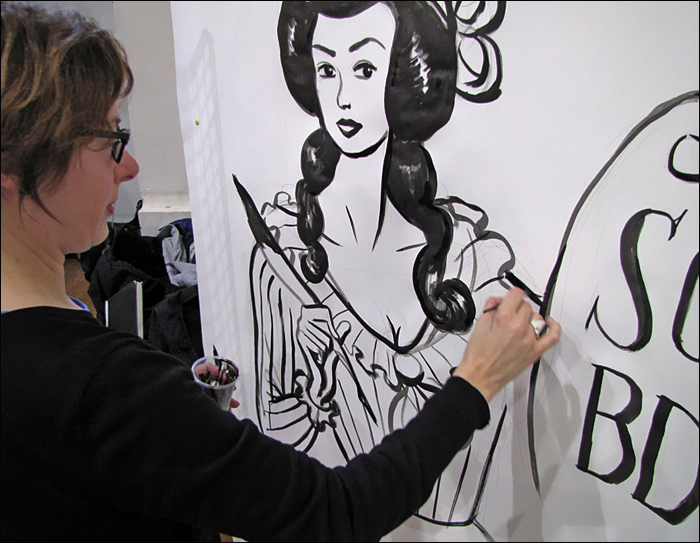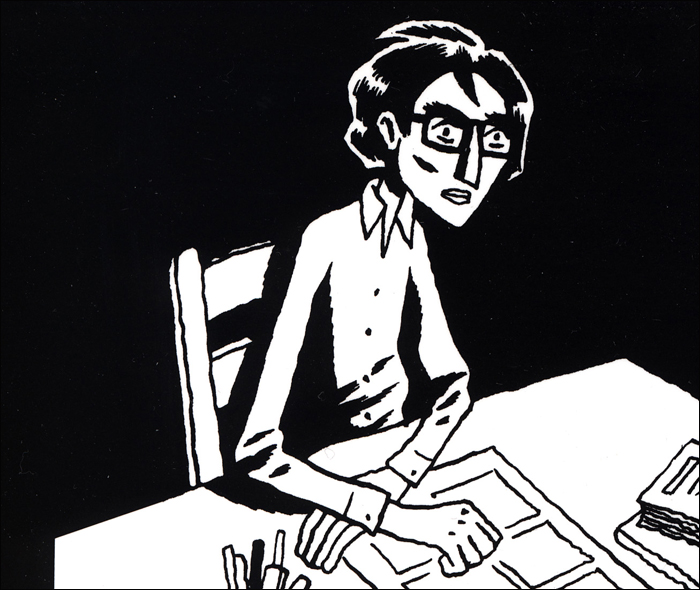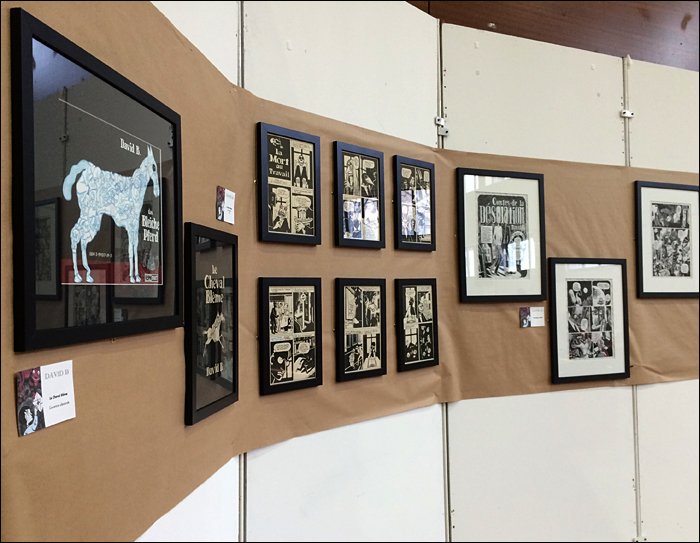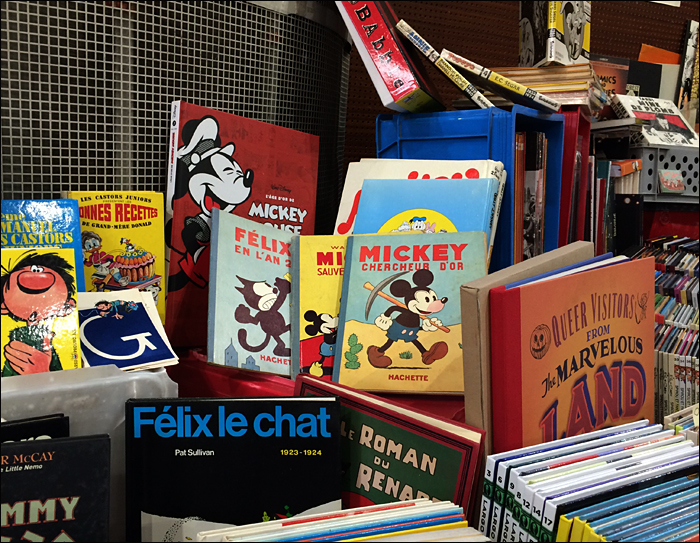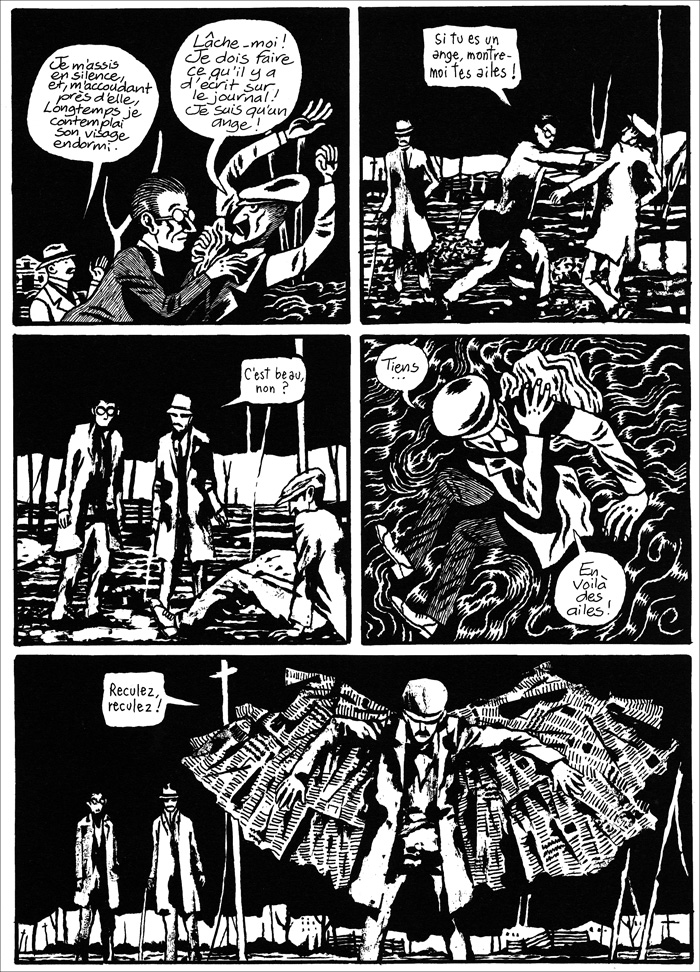In Paris, graphic novelists are true celebrities. Each year sees the publication of 5,000 BD (bandes dessinées), which command a massive market. But it’s not just because of the sales that they’re taken seriously.
As any cultured French person will tell you, the BD are an art. Specifically, the “9th art“. In France, it’s as respected as the “7th art”, which is cinema.
These books enjoy special roles in both life and literature. So do those who create them, the bédéistes. More visible here than rock musicians, the artists are media darlings.
Bédéistes have their own union, with its own political muscle. They’re visible all year round, too, thanks to a constant stream of signings, gallery openings and festivals. Last week saw two: Brecht Evens‘ show at Galerie Martel and a special weekend known as So BD (Le Salon de la Bande dessinée à Paris).
Evens, a Belgian bédéiste, was born in 1986. In works such as The Making Of, Wrong Place and Night Animals, his lush colours and dense compositions dazzle the eye. In order to immerse the viewer in his strangely magical worlds, Evens’ manipulates both dimensions and perspective.
The new show features original work from his new book Panthère (Panther). The crowd loved it and didn’t just overflow the gallery. Evens’ fans managed to fill the whole street.
All weekend, however, saw a similar throng at So BD.
Here, too, were numerous stars. Among them were Catel Muller (the artist behind award-winners like Kiki de Montparnasse), Ulli Lust, Emmanuel Guibert, Jeanne Puchol, Dave MacKean and Vincent Pompetti.
But the central Invité d’honneur was the artist David B whose real name is Pierre-François Beauchard.
During the 1990s, David B made graphic history. His bold and intricate drawings (both depictions of his nightmares and of a childhood shaped by his brother’s epilepsy) spearheaded a new, mordant graphic surrealism. Beauchard also co-founded L’Association, the alternative publishing house that would became BD’s SubPop.
Productions by “L’Asso” pioneered new formats and introduced talents such as Marjane Satrapi. (It was David B who encouraged Satrapi to create Persepolis). But the 9th art rarely remains static; its very popularity engineers change.
Bandes dessinées are truly unique in the world of publishing. Mainly that’s because, in their market, paper still rules.
So BD panels discussed phones, presentation on the internet and tablets. But, as they all admit, the money comes from physical books. Sébastien Célimon, digital chief at the publisher Glénat, cited his maison‘s annual gross profits: €80,000,000.
He noted that only €150,000 came from anything digital.
However, even major BD artists can struggle. Most also work with illustration, animation and similar projects. A modern bédéiste also has to run a blog (for free). From guest contributions to social networks to signings, PR has become his or her responsibility.
At a BD dédicace (dedication or signing ), fans expect to get more than just an autograph. Tradition insists a bédéiste inscribe each and every book – not merely with his name but with a special drawing.
In this universe, the personal touch still dominates.
• Brecht Evens continues through 31 January at Galerie Martel
• Don’t miss the latest issue of L’Association‘s mag Mon Lapin. Drawn by David B and Italian star Andrea Bruno, it unveils the truth behind a famous crime of 1938: the stabbing of playwright Samuel Beckett by a pimp called “Prudent”

